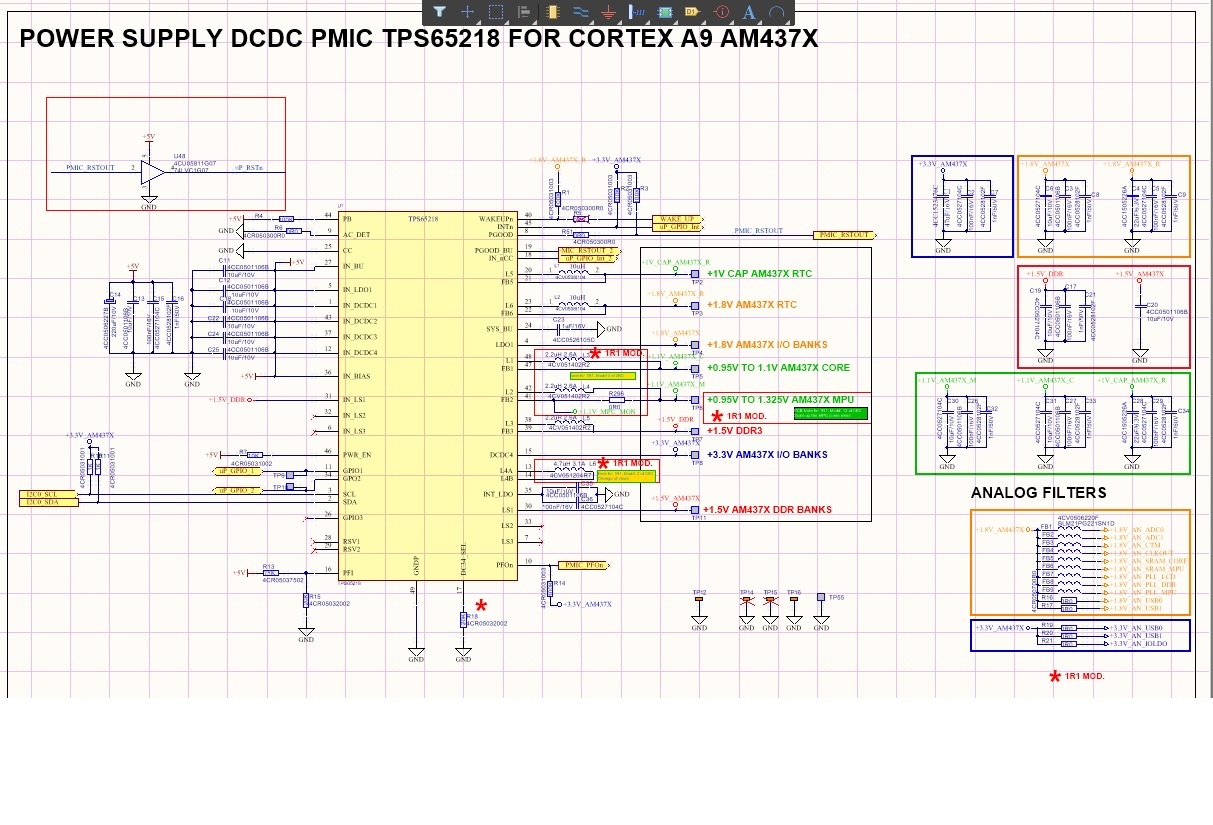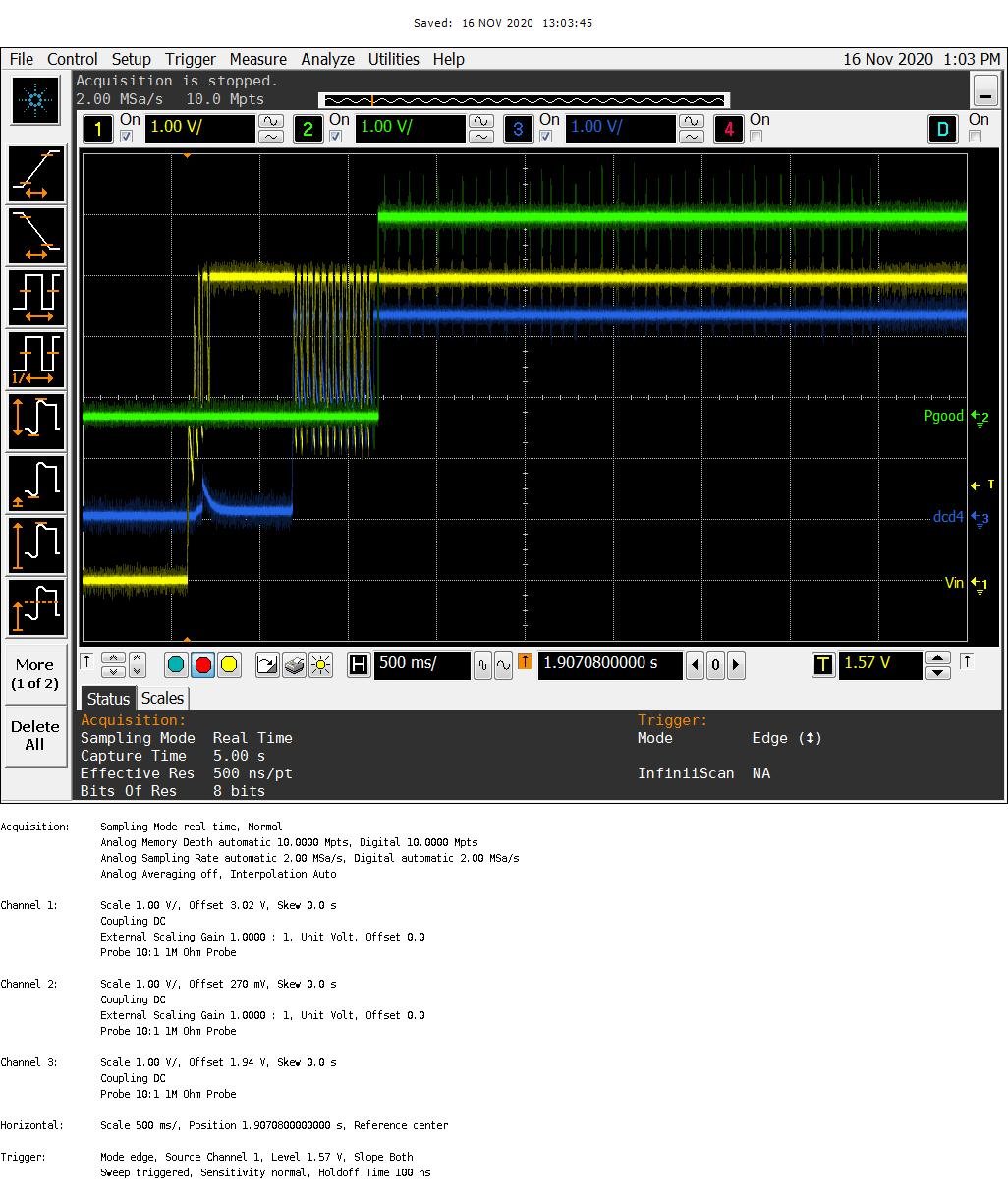Other Parts Discussed in Thread: TPS65218
Hi
I have a design with TPS65218. I´m making tests for changing this component for the new recommended reference TPS65218D0, but I have found a problem.
When I have little dips in power supply or make a star-up ramp in power supply (EN 61000-4-11) the Am437x microprocessor doesn´t start. But with the previsious reference, without D0, I don´t have any problem.
For example, if we power up in steps , for example, 0.4 v, many times the PMIC doesn´t start correctly. But the oldest reference, without D0, works good.
The schematic is :



